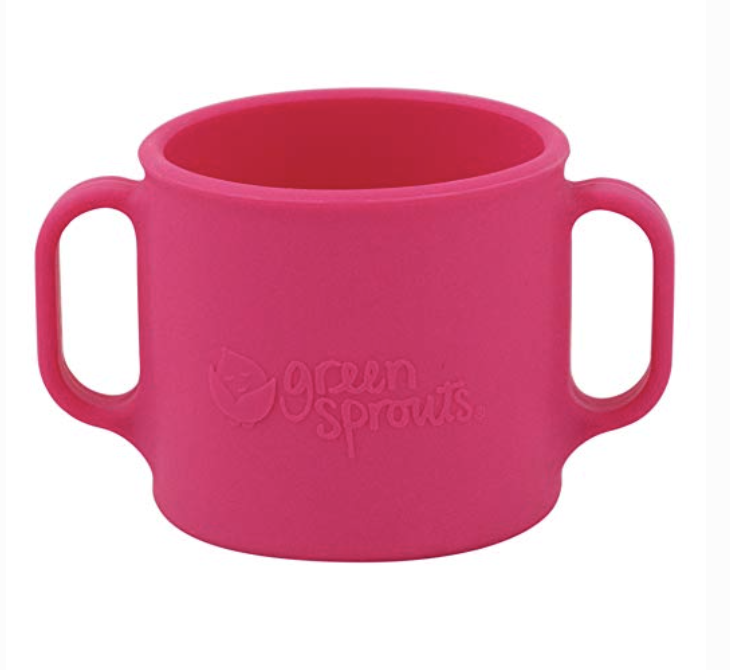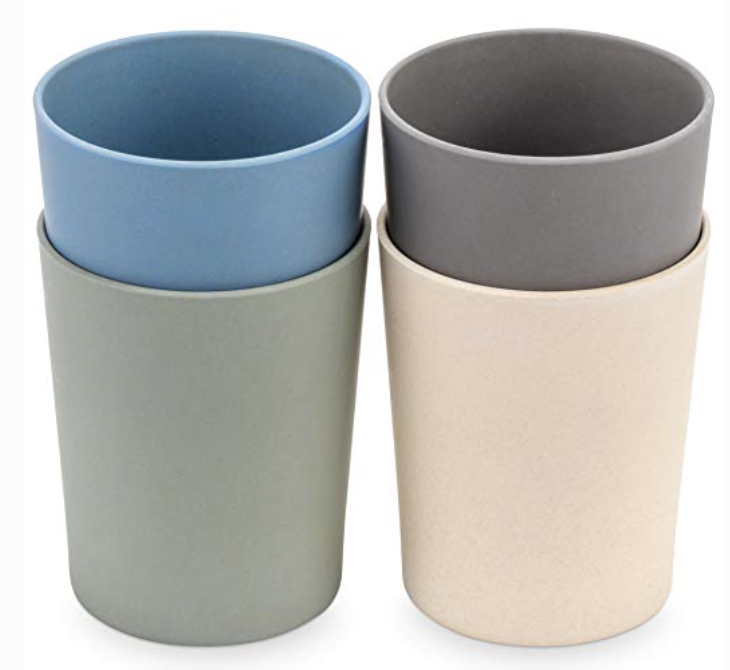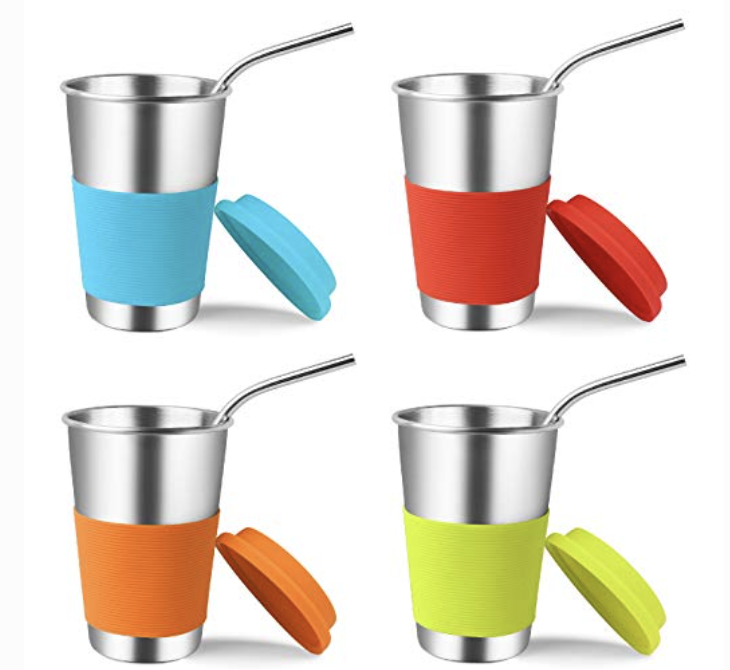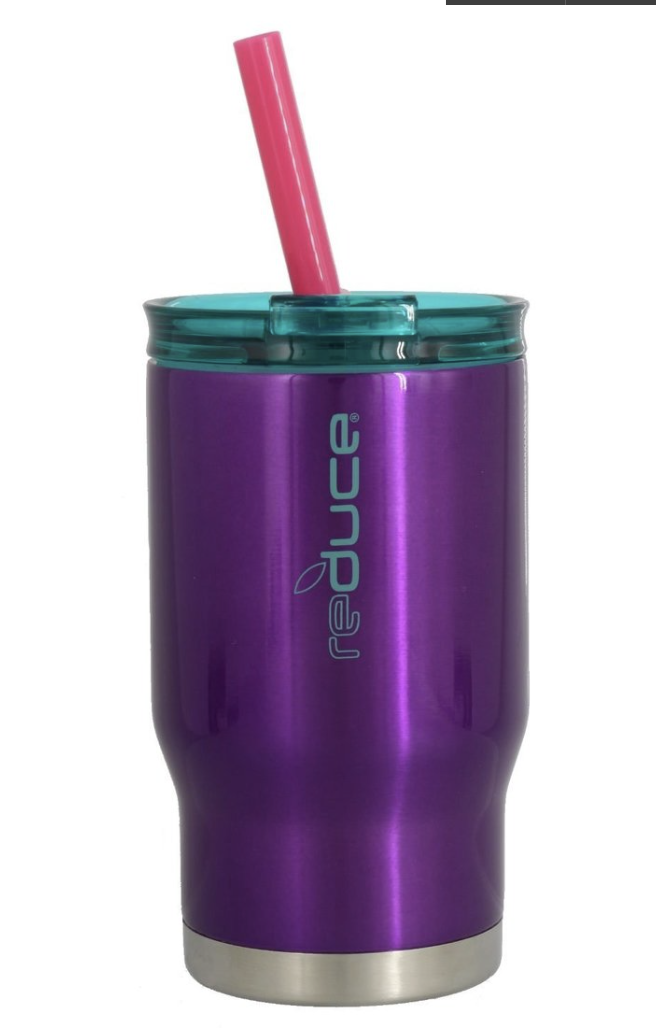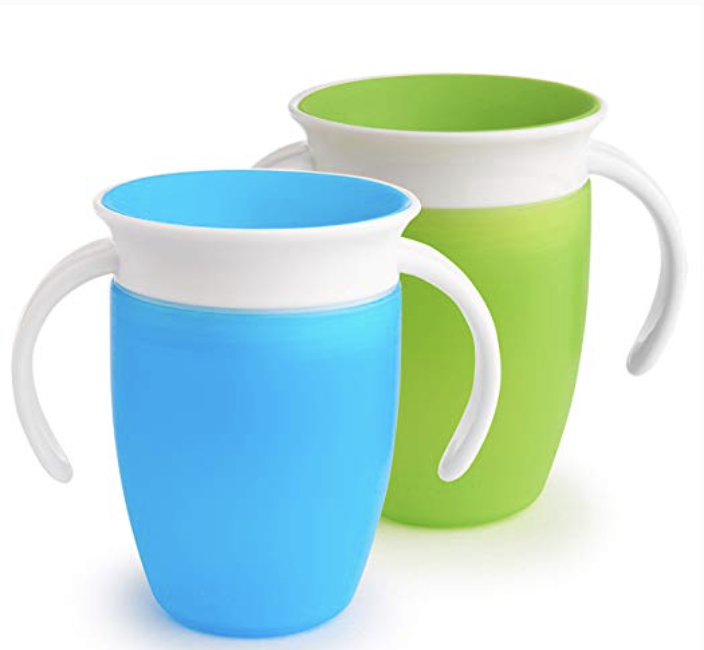Simple Steps to Transition from a Bottle to Cup
Any of the products on this page may be an affiliate link. If you click on an affiliate link and make a purchase within a specific amount of time, I get a small commission. The commission is paid by third parties, not by you. I only recommend products that I genuinely love. Thank you for your support!
So what do you really need to know about transitioning baby from a bottle to a cup?
The whole concept may seem daunting at first (especially if you’re a new mom) but I promise it’s not as complicated as you may think.
You can start teaching your baby to learn to drink from a straw and an open cup a little before or around the age of one year. It will just take some practice, a lot of repetition and a good role model along the way, too.
Firstly, whether you’re breastfeeding or bottle-feeding, please know that your child doesn’t need a transition period on a sippy cup in between breastfeeding/bottlefeeding and drinking from an open cup. That might come as quite a surprise to many parents, since sippy cups are such a mainstay in our toddler society today. Clever baby product marketers have convinced today’s generation of parents that transitioning from breast or bottle to the sippy cup is just part of the developmental process. However, from a therapists perspective, sippy cups are both completely unnecessary and also counter-productive to the development of strong oral motor skills.
Just to clarify, a sippy cup is a toddler cup with 3-4 tiny holes used as liquid spouts, that were developed sometime in the 1980s (by an engineer, mind you) to prevent toddlers from spilling their milk. They were never developed to teach a child any sort of skill. They were developed to keep parents floors clean.
“WHY SAY NO TO A SIPPY CUP?” YOU MIGHT ASK?
They Promote Oral Motor Passivity
Well, for starters, sippy cups teach children to use their mouths passively and not actively (in other words, they almost have to do nothing to obtain liquid from the sippy cup) which both weakens and provides no oral motor input to the mouth. Oral motor input from a straw, an open cup or even from food can provide “awakening” sensory input to the mouth for better speech and language as well as feeding, chewing and swallowing skills. To the contrary, with sippy cups, a child is essentially doing nothing with their mouths and receiving little to no sensory feedback.They Can Promote Poor Oral Motor Habits
Besides teaching children to not actively participate in the drinking and swallowing experience, they also teach the child to propel their tongue forward into a forward resting posture, which negatively impacts speech and swallowing skills. In a child who also uses a pacifier very frequently past one year, combined with frequent use of a sippy cup, this forward resting posture of the tongue can definitely become an issue with either feeding or speech.
If you occasionally use a sippy cup, I don’t think it should be a problem. However, if your child uses it every day and also constantly uses a pacifier, these issues I mentioned above can definitely become an issue.
SO, WHAT SHOULD I USE INSTEAD?
Well I’m sure glad you asked, friend! There are SO many other great cups for toddlers out on the market today that will teach real life drinking and swallowing skills and wont interfere with speech and language development at all.
Don’t worry, some of these cups are spill proof too!
Here’s the two main pointers to look for in a good cup for your toddler:
Look for cups with either a straw or those that promote an open-cup drinking pattern
Look for open cups that are are good fit for the size of your toddlers hands
Avoid spouted cups at all costs
Here are just a few of my favorite cups that I recommend below. Click on the image to purchase.
MY FAVORITE ACTIVITIES TO TEACH DRINKING SKILLS
Teach your child the art of pronation/supination (flipping the wrists up and down - a skill necessary for bringing a loaded cup to the mouth and drinking from it). Here’s how: In the bath, give your child two cups (different colored cups work best). Model to them how to pour water from one cup to the next and say “pour, pour,” while you do this. This will help your toddler to learn that holding the cup upright keeps the water in. It also helps to stabilize the muscles in the wrists for cup drinking.
Teach your child how to carry an open cup and not spill it by practicing outside with a loaded cup. Fill up a bucket with water and give your child a cup. Have them dip the cup into the bucket and fill it with water and then carry it to another location to pour it out. This teaches your child all of the skills mentioned above.
Teach your child how to drink from a straw. You can do this by cutting a small straw in half, dipping it into water and placing the tail end into your childs mouth and slowly releasing. This will teach your child that water comes out of a straw. After they have mastered this passive skill, its time to practice it actively. Model straw drinking for them and show them how you close your lips around the straw and suck. When you drink some water up, make a refreshed sound like, “Ahhh.” (kids love games like this.) Have them continue to practice closing their lips around straws and sucking and keep on practicing. Larger straws work best at first, as baby is still learning the art of lip closure.
Vibration input prior to practicing drinking can be helpful for younger babies or kids with low muscle tone. You can use a vibrating toothbrush for this. Simply touch a vibrating tip of a toothbrush to your childs mouth prior to drinking or eating or you can hand your toddler the brush themselves and let them explore it with their mouth independently. This will help waken up the mouth prior to feeding or drinking for better oral motor skills and awareness of the mouth in general.
These honey bear cups are amazing for teaching straw drinking skills.
You can find them here.


